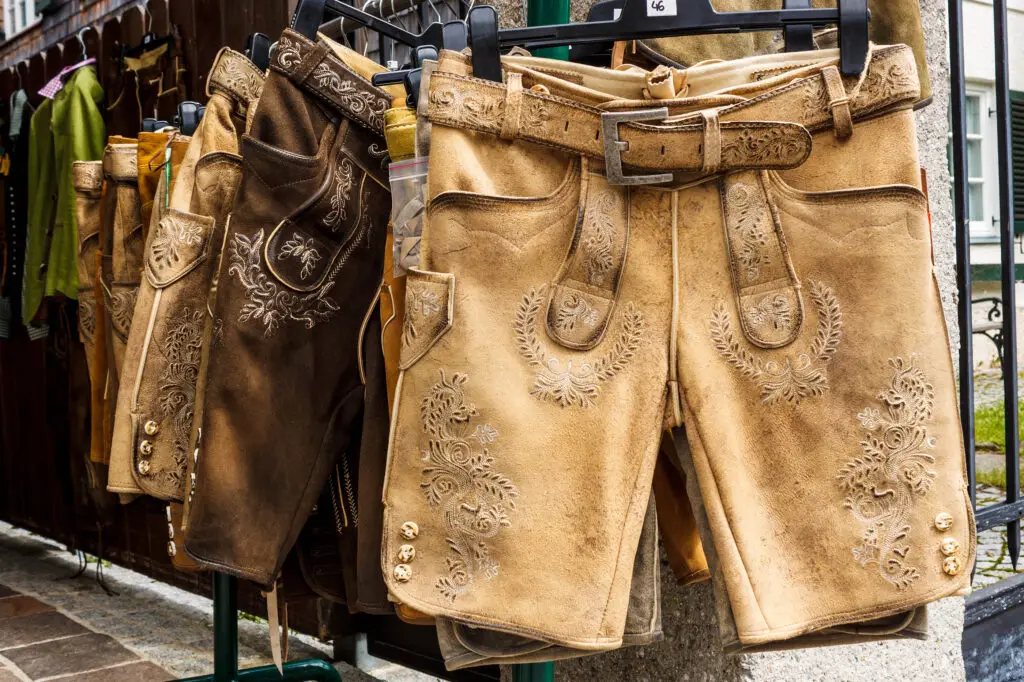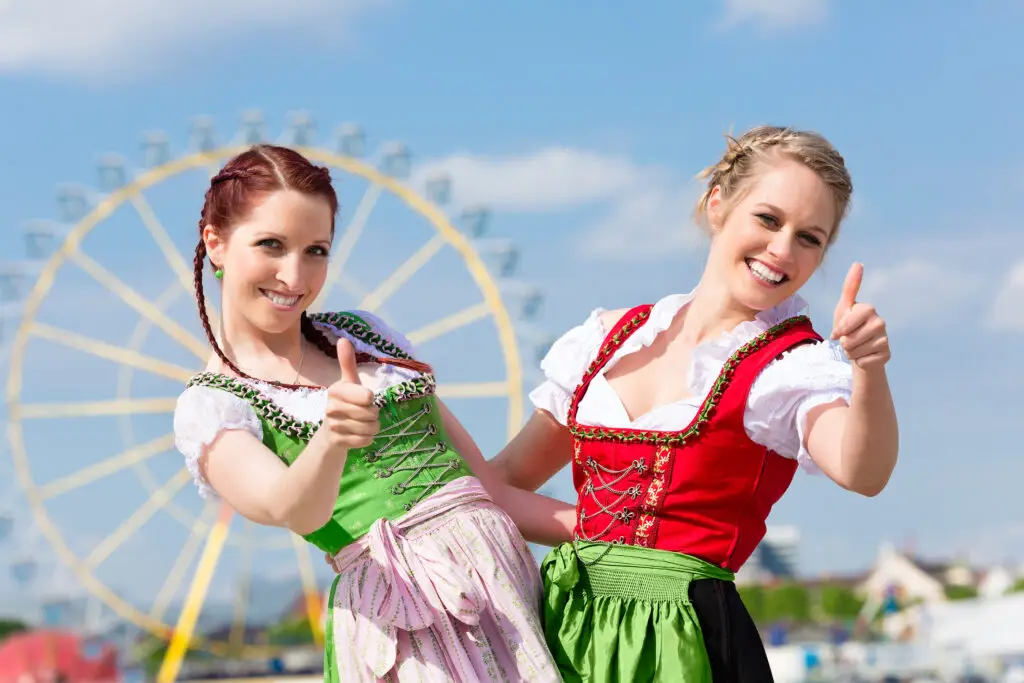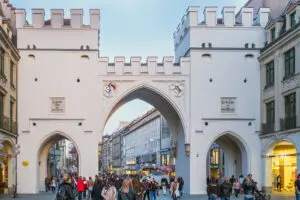Step into tradition, wear a story!
Nothing says Bavaria quite like the iconic Lederhosen and Dirndl. These traditional garments are more than just festive attire – they’re a proud symbol of regional identity, cultural heritage, and timeless style.
What Are Lederhosen and Dirndl?
Lederhosen, meaning “leather pants”, are knee-length breeches traditionally worn by men, often made of sturdy deerskin with intricate embroidery.
Dirndls are elegant dresses worn by women, typically featuring a fitted bodice, wide skirt, and apron – with countless combinations of fabrics and styles, from rustic to regal.
Whether you’re clinking steins at Oktoberfest, dancing at a folk festival, or exploring the Alps, these garments are your ticket to blending in like a true local.

A Brief History
The roots of this fashion stretch back to the 18th century:
- Lederhosen were originally worn by farmers, hunters, and laborers across the Alpine regions. Tough and practical, they were the jeans of their day – designed for hard work but often finely decorated.
- Dirndls began as servant uniforms in rural households but were later adopted by the upper class in romanticized, stylized versions. Over time, they became festive wear for all – a blend of history, femininity, and regional pride.
During the 19th-century wave of Bavarian nationalism, the outfits were embraced as a symbol of identity, especially during King Ludwig II’s reign, and later popularized through festivals like Oktoberfest.
Our Recommendation
If you’re visiting Bavaria, don’t just observe – participate! Renting or buying a Dirndl or Lederhosen for your trip transforms your experience. Locals appreciate the effort, and you’ll find yourself welcomed with smiles (and maybe a few free beers!).
- For Oktoberfest, go for a full outfit – shoes, socks, accessories, the works.
- For a traditional dinner or countryside event, a simpler version is perfect.
Dirndl Tip: The way you tie your apron says something!
- Bow on the left: single
- Bow on the right: taken
- Bow in the middle: modest or undecided
- Bow in the back: widow or waitress

Where to Find Authentic Outfits in Munich
Whether you’re buying a keepsake or just looking to rent for the day, Munich has excellent options:
- Angermaier Trachten – One of Munich’s most famous stores for high-quality, fashionable traditional wear.
- Lodenfrey – Upscale and historic, offering beautifully crafted garments in a stunning location.
- Trachten Rausch – A great mix of tradition and modern flair, with options for all budgets.
- Hirmer & Ludwig Beck – Department stores with great selections, especially before Oktoberfest.
- Wiesn Tracht & Mehr – Excellent for rentals if you’re not looking to buy.
To learn more about the cultural roots, visit the Bavarian National Museum, where you’ll find beautiful historical examples and the story behind the style.
Tips from Sepp & the Locals
- Try before you buy – Traditional sizes and fits can vary.
- Ask questions – Shopkeepers are usually happy to share the story and significance.
- Don’t skip the details – Accessories like Haferlschuhe (traditional shoes), wool socks, and jewelry make the outfit complete.
- Wear it with respect – These outfits are cultural symbols, not just costumes.
- Join a local fest – Outside of Oktoberfest, many smaller festivals offer a more authentic and relaxed experience.
Dressing in traditional Bavarian Tracht isn’t just about looking the part – it’s about stepping into a living tradition that connects past and present. So go ahead, button up those Lederhosen or lace that Dirndl, and experience Bavaria like a true local.
Prost und Servus!



